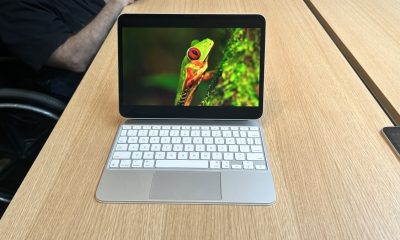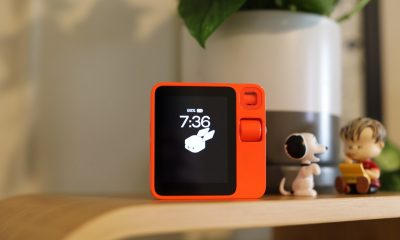Technology
Apple’s T2 chip makes third-party Mac repairs impossible

/https%3A%2F%2Fblueprint-api-production.s3.amazonaws.com%2Fuploads%2Fcard%2Fimage%2F858757%2F8b319c9d-3b90-4246-a5a5-708e9d17b072.png)
Image: IFIXIT

Follow @https://twitter.com/PCMag
PCMag.com is a leading authority on technology, delivering Labs-based, independent reviews of the latest products and services. Our expert industry analysis and practical solutions help you make better buying decisions and get more from technology.
Teardowns of Apple hardware have repeatedly revealed just how difficult it is to repair. Apple doesn’t want you to repair its devices, so why make it easy? But with the introduction of the T2 chip, Apple switched from deterring repairs to outright blocking them by anyone other than Apple authorized service providers.
The T2 chip is an 64-bit ARMv8 part that runs an operating system called BridgeOS. Apple first included the chip in the iMac Pro launched in Dec. 2017, where it serves a number of security purposes including protecting the boot process, securing encrypted keys, and handling system functionality such as access to the camera. The T2 has since been added to the MacBook Pro 2018, which launched in July.
As MacRumors reports, an internal Apple document reveals that in order to complete some repairs on the iMac Pro and MacBook Pro fitted with the T2 chip, a proprietary piece of diagnostics software is required. If that software isn’t used, a system will be rendered inoperative.
For the MacBook Pro, the requirement applies to display, logic board, Touch ID, and any top case repairs — including the keyboard, trackpad, speakers, and battery. For the iMac Pro, the software is needed if a logic board or flash storage repair is performed.
As you’ve probably guessed, Apple only makes the diagnostic software available to its own stores and authorized service providers. So if you own an Apple device fitted with a T2 chip you won’t be able to carry out repairs yourself or take it to a repair shop that isn’t certified by Apple. What makes this worse is the fact that once Apple decides to stop supporting models fitted with a T2 chip in future, there will be no way to repair them. They will become dead products.
If the high cost of purchasing an iMac Pro or MacBook Pro wasn’t enough, this requirement for proprietary software during a repair puts a hard limit on the lifetime of a device. And it seems unlikely Apple will stop at just these two products, since Apple will probably ship many (if not all) future Macs with a T2 chip.
Blocking repairs ultimately leads to higher prices and enforces planned obsolescence. The best way to fight it is by supporting right to repair initiatives and bills such as the California Right to Repair Act. You could also choose not to buy Apple, but it seems unlikely enough people would be willing to do that for Apple to even notice.

This article originally published at PCMag
here
!function(f,b,e,v,n,t,s){if(f.fbq)return;n=f.fbq=function(){n.callMethod?
n.callMethod.apply(n,arguments):n.queue.push(arguments)};if(!f._fbq)f._fbq=n;
n.push=n;n.loaded=!0;n.version=’2.0′;n.queue=[];t=b.createElement(e);t.async=!0;
t.src=v;s=b.getElementsByTagName(e)[0];s.parentNode.insertBefore(t,s)}(window,
document,’script’,’https://connect.facebook.net/en_US/fbevents.js’);
fbq(‘init’, ‘1453039084979896’);
if (window.mashKit) {
mashKit.gdpr.trackerFactory(function() {
fbq(‘track’, “PageView”);
}).render();
}
-

 Entertainment6 days ago
Entertainment6 days agoApple Watch Series 9 vs. SE: A smartwatch skeptic tested both for 13 days
-

 Business5 days ago
Business5 days agoGoogle lays off workers, Tesla cans its Supercharger team and UnitedHealthcare reveals security lapses
-

 Entertainment6 days ago
Entertainment6 days agoThe greatest films on Prime Video right now
-

 Business6 days ago
Business6 days agoGoogle dubs Epic’s demands from its antitrust win ‘unnecessary’ and ‘far beyond the scope’ of the verdict
-

 Entertainment2 days ago
Entertainment2 days agoiPad Pro 2024 now has OLED: 5 reasons this is a big deal
-

 Business7 days ago
Business7 days agoApple: pay attention to emerging markets, not falling China sales
-

 Entertainment5 days ago
Entertainment5 days agoLoneliness in kids: Screen time may play a role
-

 Business4 days ago
Business4 days agoThe Rabbit r1 shipped half-baked, but that’s kind of the point





















